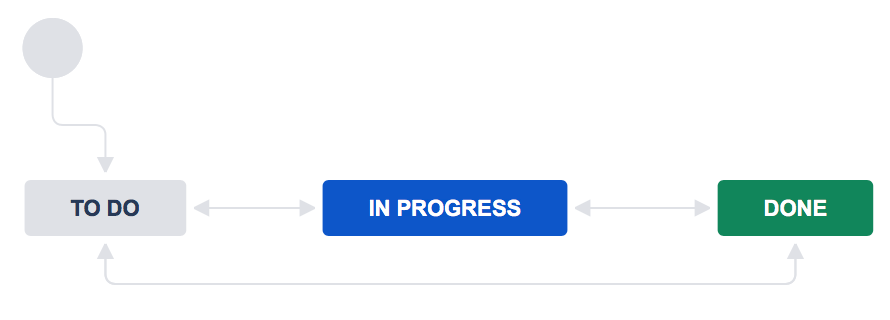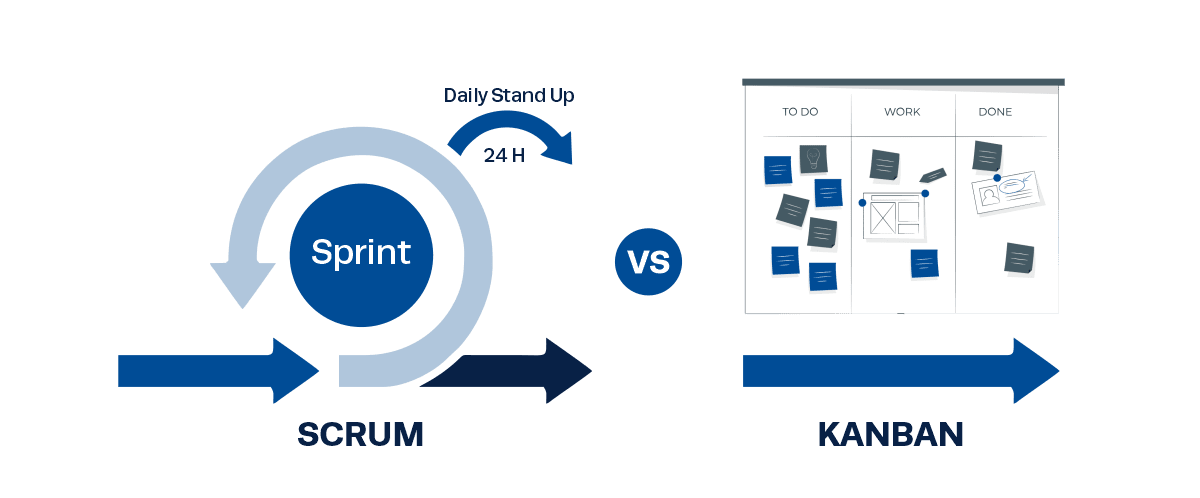
- Introduction to Product Management
- Role of a Product Manager
- Product Lifecycle Phases
- Market Analysis and Research
- Setting Product Vision and Strategy
- Roadmap Creation
- Prioritization of Features and Requirements
- Collaboration with Development Teams
- Product Launch and Marketing
- Conclusion
Eager to Acquire Your Data Science Certification? View The Data Science Course Offered By ACTE Right Now!
Introduction to Product Management
Product management means handling a product’s development, launch, and continuous improvement. It is practiced by aligning the business requirements and customer demands to create solutions of value. Product management traverses the entire life cycle of a product from idea and planning to development, sales, and support. It requires coordination with the cross-functional team in various functions such as engineering, design, sales, marketing, and Data Science Training. Effective product management guarantees value delivery to customers, fulfills business objectives and remains competitive. With the Agile techniques and customer-centric strategies becoming popular, product management has become a major organizational function for delivering growth and innovation.
Role of a Product Manager
A Product Manager (PM) is at the core of making a product successful by defining its vision, strategy, and roadmap. The PM acts as a liaison between business stakeholders, customers, and development teams. Their responsibilities include market research, customer understanding, and prioritizing features based on business value. They collaborate with designers and engineers to translate requirements into deliverable products. Product managers align with marketing and sales teams to develop go-to-market strategies and provide successful launches. Post-launch, they monitor performance metrics, gather feedback, and adjust the product to add value and usability. Effective PMs balance customer requirements, technical feasibility, business goals, and leverage Data science Training to deliver successful products.

Product Lifecycle Phases
- Ideation: Creating and testing new product ideas concerning market trends, customer demands, and business objectives.
- Market Research: Undertaking analysis to know what customers like, who the competitors are, and what industry trends are.
- Concept Development: Establishing the product concept, features, target market, and value proposition.
- Design and Prototyping: Develop wireframes, mockups, and prototypes to see the product and test its functionality.
- Development: Working with engineering teams to develop the product based on the specified requirements, including Web Development.
- Testing and Quality Assurance: Performing thorough testing to detect and fix bugs or issues before launch.
- Launch: Launching the product into the market through marketing campaigns and sales efforts.
- Post-Launch Evaluation: Tracking product performance, gathering user feedback, and iterating for improvements.
- Maturity and Optimization: Improving features, optimizing performance, and responding to market changes.
- Decline or Sunset: Sunsetting products that no longer satisfy market needs or profitability expectations.
Market Research and Analysis
Market research and analysis are essential to develop products that satisfy customer needs and stay competitive. It collects information regarding industry trends, customer needs, and competitor products. Product managers run surveys, interviews, and focus groups to learn about the target audience’s pain points and expectations. Competitor analysis determines market gaps and possible differentiators. With Google Analytics, SEMrush, and customer feedback platforms, PMs get insights into user behavior, buying habits, and emerging trends. This information determines product positioning, pricing, and feature prioritization. Sound market research eliminates risk, increases product-market fit, and supports intelligent decision-making throughout the life cycle of a product.
Excited to Obtaining Your Data Science Certificate? View The Data Science Training Offered By ACTE Right Now!
Setting Product Vision and Strategy
- Product Vision: A short-term, goal-oriented statement defining the purpose and value proposition of the product.
- Business Goals: Synchronizing the product vision with organizational objectives, such as revenue growth, expansion in market size, or retaining customers.
- Customer Focus: Guaranteeing the product addresses genuine customer pain points and provides an excellent user experience.
- Differentiation: Determining unique selling points (USPs) to differentiate from the competition.
- Prioritization: Establishing high-impact features that drive business and customer objectives.
- Go-To-Market Strategy: Describing how the product will be positioned, promoted, and distributed in the market.
- Iterative Improvement: The vision and strategy are continually refined based on market feedback and changing business requirements.

Roadmap Creation
A Product Roadmap is a planning document that states a product’s vision, direction, and future over time. It is a tool for communication that aligns stakeholders and keeps teams on track. The roadmap typically includes key milestones, feature releases, and timelines. Product managers prioritize features by business goals, customer feedback, and technical feasibility. Roadmaps can be categorized as goal-driven (objective-centered), feature-driven (deliverable-focused), or theme-driven (strategic priority-centered). Great roadmaps are flexible, open, and constantly revised to keep pace with changing priorities and the ever-changing market situation. Roadmaps keep teams on track and in alignment with the product vision as a whole.
Interested in Pursuing Data Science Master’s Program? Enroll For Data Science Master Course Today!
Prioritization of Features and Requirements
- Value vs. Effort: Prioritize features according to the value customers can gain from them and the effort required to deliver them.
- MoSCoW Approach: Prioritizing features under Must-Have, Should-Have, Could-Have, and Won’t-Have categories.
- RICE Scoring: Prioritizing features based on Reach, Impact, Confidence, and Effort.
- Kano Model: Determining customer delight factors, performance features, and basic expectations.
- Cost-Benefit Analysis: Balancing the costs of feature implementation with anticipated benefits.
- User Feedback: Integrating customer preferences and feedback into decision-making.
- Technical Dependencies: Prioritizing features based on complexity and technical dependencies.
Preparing for a Data Science Job Interview? Check Out Our Blog on Data Science Interview Questions & Answer
Collaboration with Development Teams
Success lies in effective communication with development teams. Product managers communicate closely with engineers, designers, and QA teams to help them turn product requirements into practical work. Product managers develop and track user stories, acceptance tests, and tech specs. Product managers attend routine meetings like stand-ups, sprint planning, and retrospectives for good communication and coordination. PMs offer context around user needs and business goals so that development teams remain aligned to delivering value. Tools such as JIRA , Trello, and Asana facilitate task management and progress tracking. Open communication and timely removal of blockers allow product managers to deliver features on time and of high quality.
Product Launch and Marketing
- Pre-Launch Planning: Launch strategy, target audience, and key messaging definition.
- Go-To-Market Strategy: Building marketing campaigns, positioning statements, and promotion material.
- Beta Testing: Performing limited distribution to obtain customer feedback and assess problems before the general rollout.
- Sales Enablement: Arming salespeople with product information, demos, and support collateral.
- Launch Execution: Staging marketing effort, public availability, and promotional announcements.
- Customer Support Readiness: Getting support personnel ready with manuals and FAQs.
- Feedback Collection: Securing early consumer feedback to improve aspects.
- Post-Launch Analysis: Tracking performance metrics, customer adoption, and overall influence.
Conclusion
In conclusion, product management is a vital and dynamic discipline that encompasses every aspect of a product’s journey from conceptualization and development to launch, optimization, and eventual retirement. Effective product managers play a pivotal role in aligning business objectives with customer needs, ensuring that the right products are created and delivered to market. By overseeing the product lifecycle, conducting thorough market research, defining a clear product vision, and fostering collaboration across cross-functional teams, product managers contribute significantly to the growth and success of their organizations. With the increasing emphasis on Agile and Lean methodologies, along with Data Science Training, product management has evolved to become more iterative, customer-driven, and responsive to market changes. As companies continue to innovate and compete in ever-changing markets, the role of the product manager will remain crucial in guiding the strategic direction of products, prioritizing features, and delivering solutions that create value for both customers and businesses. Looking ahead, trends such as AI integration, enhanced data analytics, and personalization will further shape the future of product management, providing even more tools for PMs to optimize processes and deliver superior products. For anyone pursuing a career in product management, mastering these principles and staying adaptable will be key to navigating the challenges of tomorrow’s product landscape. Ultimately, product management is a journey of constant learning, iteration, and improvement, aimed at delivering the best possible product experience for users and achieving business success.


